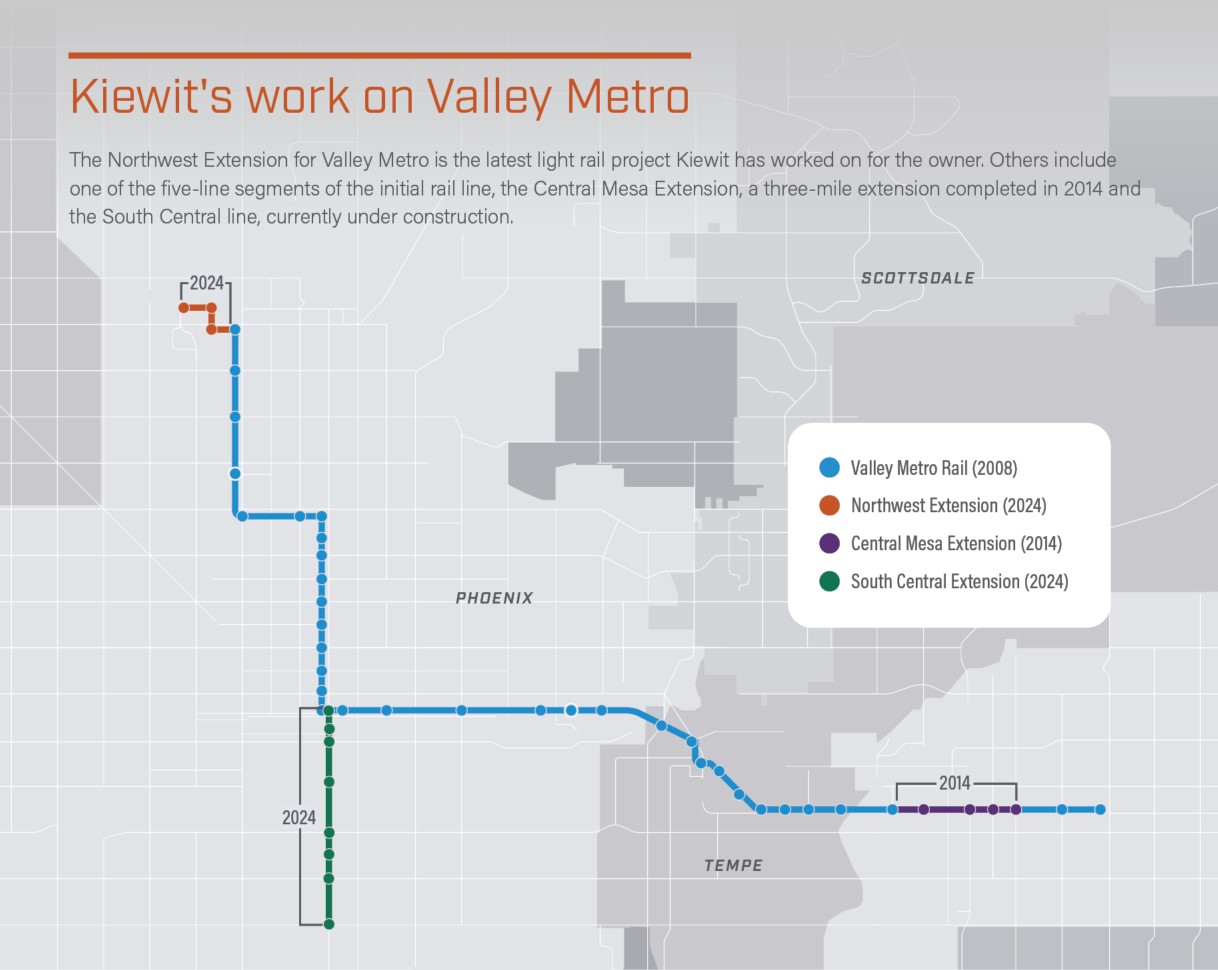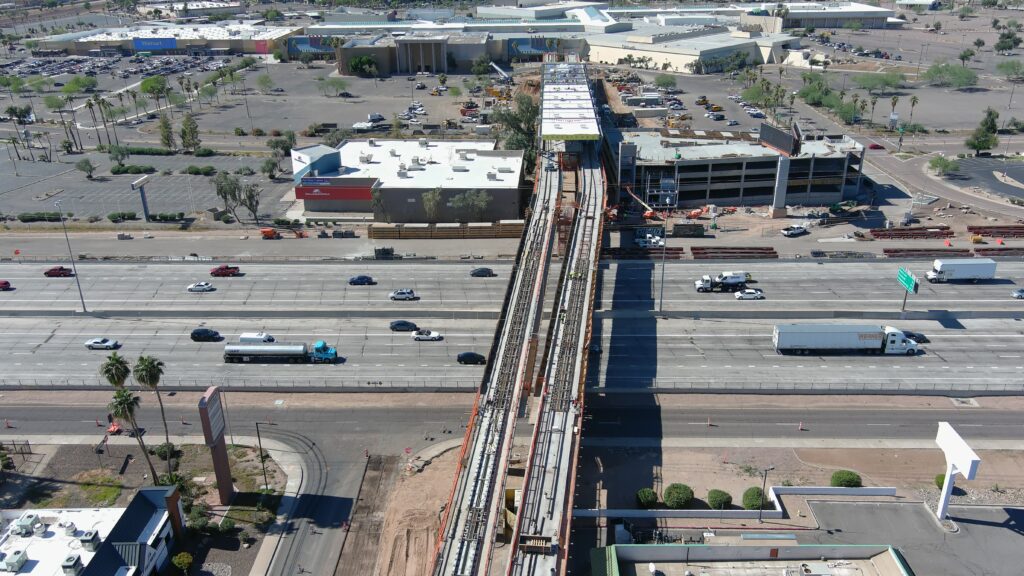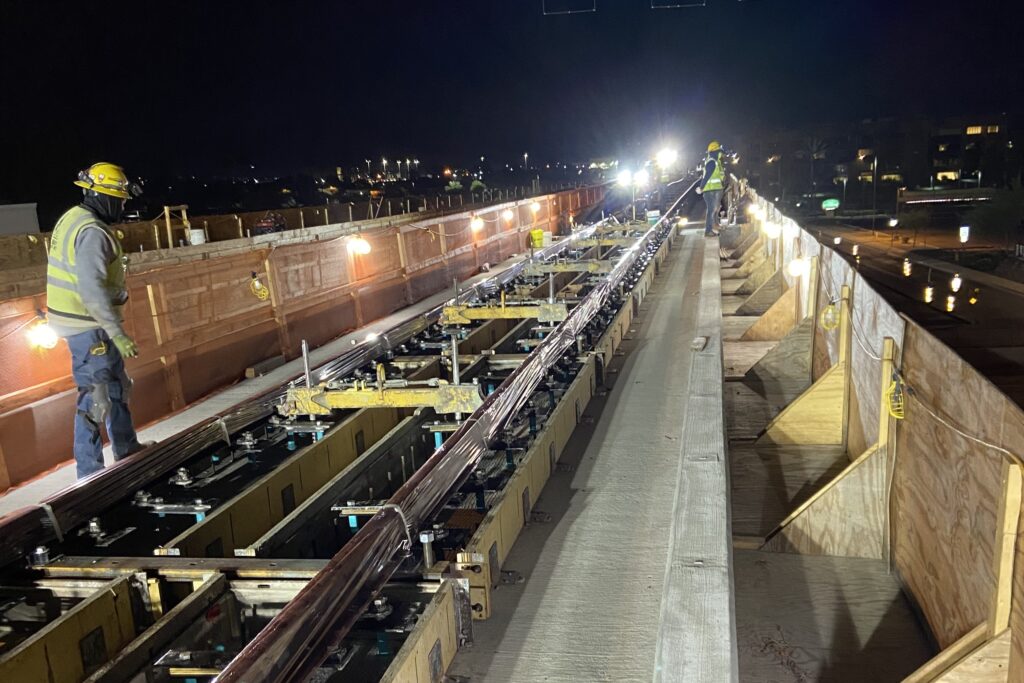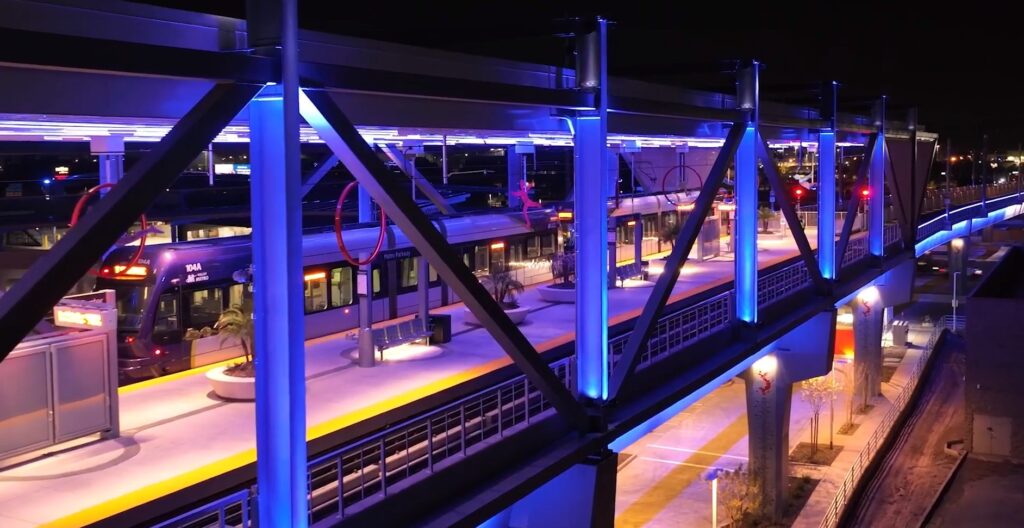Serving Northwest Phoenix, this extension is the latest Valley Metro light rail project for Kiewit. The project was made possible by a Kiewit-McCarthy joint venture (KMJV), with support from Kiewit subsidiary Mass. Electric Construction Co.
The job included several “never-befores” for Valley Metro, including its first light rail aerial station, first parking garage — a four-story, 90,830-square-foot, 258-vehicle structure — and first rail-only bridge to traverse an interstate. Other features include a transit center with bus service, public art and new landscaping.
Cost savings, timeline savings
KMJV was awarded the CMAR (Construction Manager at Risk) contract early in the design concept phase. The timing had immediate cost benefits, said area manager Nick Wiatrowski.
“We had the ability to really work hand-in-hand with the designer and Valley Metro to get the project started on the right foot,” Wiatrowski said.
Brainstorming sessions with the team, in the form of facilitated workshops, yielded 141 value-engineering ideas that were implemented, totaling over $61 million in cost savings.
That early work, driven by strong collaboration between Valley Metro, the City of Phoenix, the designer and KMJV, allowed the project to be completed on time and under budget.
Innovations and trust
The workshop brainstorms also netted several innovations. One of them was a way to eliminate reinforcing bars usually used in track slab construction.
Instead, reinforcing steel fibers were incorporated into the concrete mix. This trimmed the track slab thickness from 14.5 inches to 12 inches. The new dimensions reduced the quantity of cubic yards of concrete required as well as the amount of excavation to install the guideway.
Using this innovative mix would be another first for Valley Metro, and for light rail construction in general.
Project Manager Nik Hunter credits the owner with being open to innovation and working with KMJV to put new solutions like these into play.
“There were studies and test pours and a lot of analysis that was done, but what was key to making this successful were two things,” Hunter said.
“One was having the KMJV use outside-the-box thinking and come up with different ideas and solutions to scheduling and budget challenges.” The other was having “a client that’s engaged and willing to entertain and incorporate new elements, new features and new processes into their work.”
Tony Santana, Valley Metro’s deputy chief of design and construction, said for his team, success begins with a good partnership.
“In order to be a partner, you have to trust the contractors you have, and that all starts with the qualification process,” Santana said. “[KMJV] has a great history of working with Valley Metro projects as well as our design team. I think all of the teams were willing to take smart risks on innovation and incorporate those into the project.”

‘Grinning from ear to ear’
With the parking garage, KMJV recognized another cost-savings opportunity. The team already had some pre-cast concrete forms that could be repurposed for the garage construction.
“We approached the owner to construct the garage as a design-build option within the joint venture to reduce costs, and they were amenable to that option,” Wiatrowski said. “The job still met all of the owner’s performance requirements and reduced the cost by about 25 percent, based on designing it around the form work we already had.”
Wiatrowski said one of the most exciting things about building light rail is to see the positive change in the communities that light rail serves.
“Light rail is a big economic boost to local communities, from residential development all the way through commercial development.”
Setting the girders for the bridge and structure over I-17, a major thoroughfare, required close coordination with the Arizona Department of Transportation. Originally, the work was set to be performed in two closures, but the team completed it over one weekend.
When service opened to the public in January of this year, Wiatrowski and the rest of the team took an inaugural ride together.
“The track was smooth as can be,” he said. “Everybody was just grinning from ear to ear. They were so excited and happy about how well the project turned out.”
The large number of people at the grand opening — over 2,000 team and community members — showed the impact of the latest addition to Valley Metro’s system for Phoenix residents.
“You could tell by the turnout we had at the opening ceremony,” Hunter said. “That was really neat to see the fruits of everybody’s labor and how big of a deal that this line is to the community.”
Santana remembers the faces of so many who attended that day, people “who appreciated the hard work it takes to build the project but also the long-lasting effect it will have on that community. It’s why we do what we do,” he said.
“When you have a true partnership and everyone shares the same goal in mind to open on time and on budget, you have a successful project like we did.”





